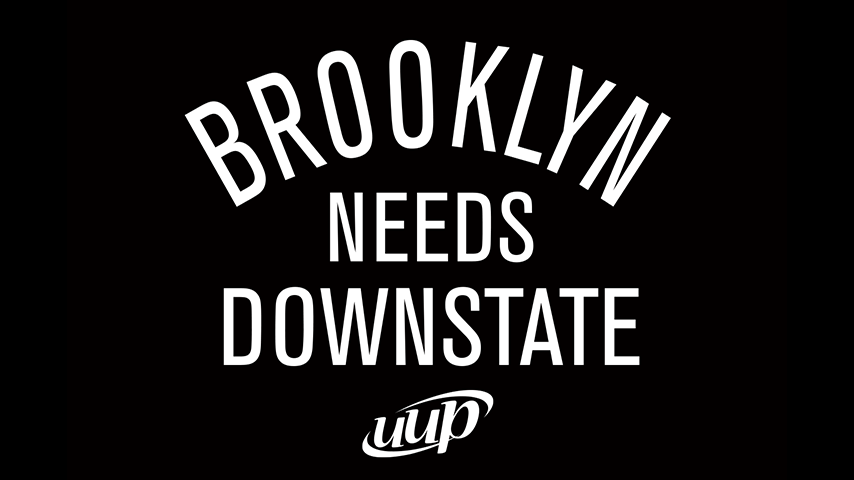January 20, 2024

UUP is responding swiftly and sharply to the shocking news that SUNY’s so-called “transformation” of SUNY Downstate Health Sciences University Hospital is in reality a plan to shut down the 168-year-old hospital.
UUP President Fred Kowal said the plan, which hospital workers learned about in a flowery, ambiguous Jan. 16 email from Downstate President Wayne J. Riley, includes farming out health care services to neighboring hospitals and consolidating what’s left in a wing of a hospital across the street.
“SUNY is calling its vision for Downstate a transformation, but it is anything but that,” Kowal said. “Let’s call this what it is: SUNY is closing Downstate. If there is no building, there is no hospital.”
The news is especially disheartening, Kowal said, because Downstate workers risked their lives four years ago when the coronavirus pandemic hit the New York City Metropolitan Region. A Downstate physician died of COVID he contracted while caring for patients, and hundreds of other Downstate workers got COVID as a result of their selfless actions.
“Our Downstate members were hailed as heroes during the early days of the pandemic and SUNY Downstate was designated as a COVID-only hospital,” Kowal said. “And this is the thanks they get? This is disturbing, to say the least, and we will not stand for it.”
NYSUT President Melinda Person said public input and the “critical community needs” of Central Brooklyn must be a priority in any plan regarding the hospital’s future.
"Reimagining SUNY Downstate with funding and state support could be transformative for Central Brooklyn. Here is an opportunity to provide greater healthcare access and more targeted services in neighborhoods that desperately need them,” Person said. “The governor, Legislature and all stakeholders must work in tandem to forge a bright path forward that prioritizes public input and these critical community needs.”
“This is a radical plan for the hospital that will undoubtedly harm the health of the Central Brooklyn community,” Kowal said. “It is unthinkable that it has not been subject to a full public hearing that would give stakeholders an opportunity to have their say about the future of this vital institution.”
Huge expenses; no state funding
As a public teaching hospital, SUNY Downstate treats all patients who walk through its doors, including patients who are unable to pay for care. It also provides state-of-the-art procedures that other hospitals can’t or don’t offer. The vast majority of Downstate’s patients — nearly 90 percent — are on Medicaid, are underinsured or have no health insurance.
Yet the state stopped providing any operating funds to all three of its state teaching hospitals years ago.
"How can you pull from this community a hospital this is so needed and so necessary?” Kowal asked. “Central Brooklyn is a diverse, underserved community that relies on the health care SUNY Downstate provides.”
Kowal also questioned the state’s plan to send $2.2 billion in Section 1115 waiver funding to bail out cash-strapped private hospitals in the Bronx, Brooklyn, Queens and Westchester counties. SUNY Downstate, a public hospital, isn’t getting a dollar of this funding.
“Instead of closing Downstate, let’s reimagine it as a viable, vital health care center that serves the unique needs of Brooklyn and New York City,” Kowal said. “There is another path forward, and UUP stands ready to work with the governor and the state Legislature to find a viable solution to this longstanding problem.”
This isn’t the first time that UUP has mobilized to keep Downstate open. The hospital faced a state threat of massive layoffs and possible closure or sale to a private health care system in the early 2000s. UUP credits the late Rowena Blackman-Stroud—Downstate’s longtime UUP chapter president—with single-handedly forming a coalition of faith leaders and community activists who rallied behind her call to action to save Downstate.

